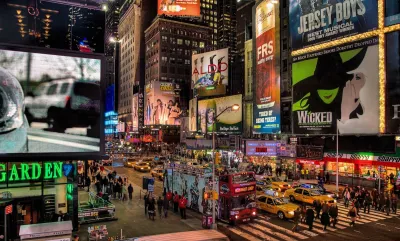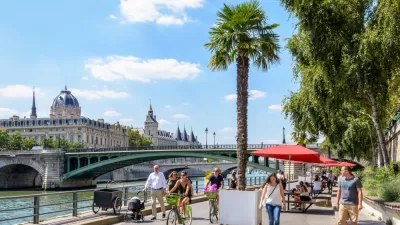Plans for compact, walkable cities often don’t address nighttime concerns like transportation and lighting, which can make neighborhoods more vibrant and safe around the clock.

How does the 15-minute city concept apply to the nighttime economy? That’s the question that an article in Cooperative City attempts to answer. According to the article, “While this concept offers solutions to several challenges such as improving quality of life, reducing social isolation, and addressing traffic and pollution, the global discussion around the 15-minute city didn’t take fully into account the nocturnal dimension of the cities.”
In many cities, transit stops running too early; nighttime lighting does not always exist; and daily needs are unavailable within a 15-minute trip after certain hours. “Increasing the quality and quantity of services and activities available after dark closer to the places where people live is a crucial aspect of urban planning.”
In Barcelona, Spain, the city is moving to provide more mobility options after 10 pm to ensure that people don’t always have to leave their own neighborhoods to access nightlife activities. “In Melbourne, the extension of the Yarra Trams—the world’s largest tram network—to operate during nocturnal hours with the Night Network, made permanent in 2017, and the Free Tram Zone in the city centre had a considerable impact in making the night-time economy more vibrant and accessible.”
Including the nighttime economy in the planning of 15-minute city strategies can also provide crucial transportation services and amenities for those workers who perform nighttime jobs. “Making the night-time economy more accessible is not just a matter of urban design, but also requires continuous adaptation of licensing and safety regulations. A stronger focus on informal spaces can contribute to making cities more liveable at night and improving access to parks and public spaces for activities that engage local youth, families, and elderly persons.”
FULL STORY: The 15-minute city at night: towards a holistic urban vision

Planetizen Federal Action Tracker
A weekly monitor of how Trump’s orders and actions are impacting planners and planning in America.

Maui's Vacation Rental Debate Turns Ugly
Verbal attacks, misinformation campaigns and fistfights plague a high-stakes debate to convert thousands of vacation rentals into long-term housing.

Restaurant Patios Were a Pandemic Win — Why Were They so Hard to Keep?
Social distancing requirements and changes in travel patterns prompted cities to pilot new uses for street and sidewalk space. Then it got complicated.

In California Battle of Housing vs. Environment, Housing Just Won
A new state law significantly limits the power of CEQA, an environmental review law that served as a powerful tool for blocking new development.

Boulder Eliminates Parking Minimums Citywide
Officials estimate the cost of building a single underground parking space at up to $100,000.

Orange County, Florida Adopts Largest US “Sprawl Repair” Code
The ‘Orange Code’ seeks to rectify decades of sprawl-inducing, car-oriented development.
Urban Design for Planners 1: Software Tools
This six-course series explores essential urban design concepts using open source software and equips planners with the tools they need to participate fully in the urban design process.
Planning for Universal Design
Learn the tools for implementing Universal Design in planning regulations.
Heyer Gruel & Associates PA
JM Goldson LLC
Custer County Colorado
City of Camden Redevelopment Agency
City of Astoria
Transportation Research & Education Center (TREC) at Portland State University
Jefferson Parish Government
Camden Redevelopment Agency
City of Claremont





























